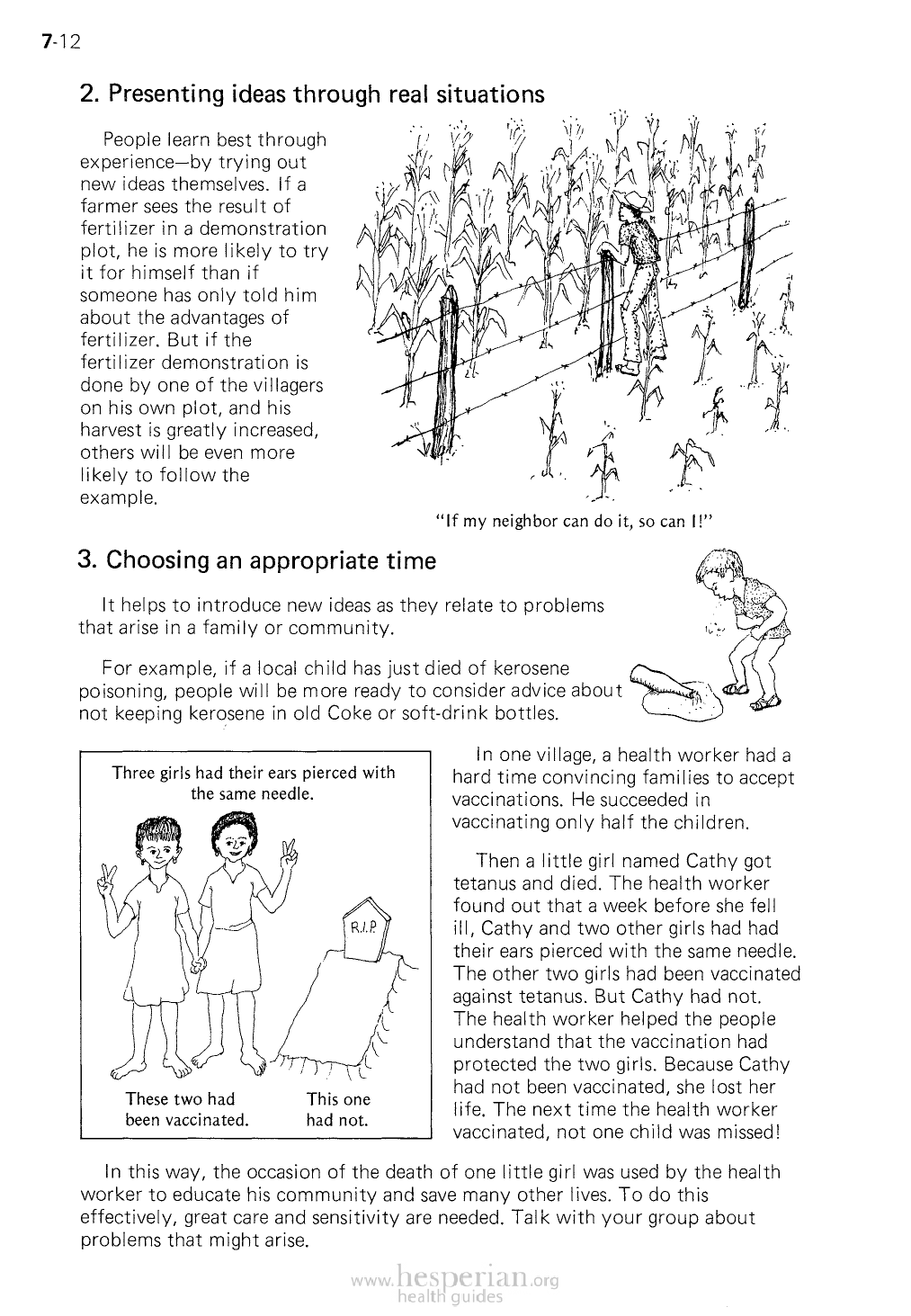
7-12
2. Presenting ideas through real situations
People learn best through
experience—by trying out
new ideas themselves. If
a farmer sees the result of
fertilizer in a demonstration
plot, he is more likely to
try it for himself than if
someone has only told him
about the advantages of
fertilizer. But if the fertilizer
demonstration is done by
one of the villagers on his
own plot, and his harvest
is greatly increased, others
will be even more likely to
follow the example.
“If my neighbor can do it, so can I!”
3. Choosing an appropriate time
It helps to introduce new ideas as they relate to problems
that arise in a family or community.
For example, if a local child has just died of kerosene
poisoning, people will be more ready to consider advice about
not keeping kerosene in old Coke or soft-drink bottles.
Three girls had their ears pierced with
the same needle.
In one village, a health worker
had a hard time convincing families to
accept vaccinations. He succeeded in
vaccinating only half the children.
These two had
been vaccinated.
This one
had not.
Then a little girl named Cathy got
tetanus and died. The health worker
found out that a week before she fell ill,
Cathy and two other girls had had their
ears pierced with the same needle. The
other two girls had been vaccinated
against tetanus. But Cathy had not.
The health worker helped the people
understand that the vaccination had
protected the two girls. Because Cathy
had not been vaccinated, she lost her
life. The next time the health worker
vaccinated, not one child was missed!
In this way, the occasion of the death of one little girl was used by the health worker
to educate his community and save many other lives. To do this effectively, great care
and sensitivity are needed. Talk with your group about problems that might arise.